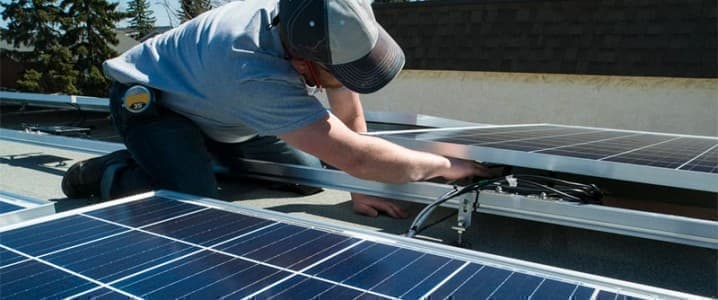The solar energy revolution is about to take off. Solar has been on the rise for years, as photovoltaic energy technology became cost-competitive with fossil fuels and then, a few years ago, became the ”cheapest electricity in history” according to the International Energy Agency’s World Energy Outlook 2020. In fact, the cost of building new solar energy infrastructure has dropped by an incredible 90% since 2010. But until now, a sweeping clean energy transition has been held up by a number of political, economic, and ideological barriers. But the Russian war in Ukraine could change all of that on a dime. While solar is increasingly attractive, this does not necessarily mean that it’s cheaper than continuing operations at an already-existing fossil fuel plant. And then there’s the problem of petro-politics. As Popular Science wrote in an article titled “Solar power got cheap. So why aren’t we using it more?”, “the investments, policies, and very infrastructure of the energy industry as a whole are very much skewed in favor of fossil fuels.” And then there’s the issue of inertia, plain and simple. Sticking to business as usual will always be easier, and often cheaper, than revolutionizing the energy industry.
But now, the Russian invasion and occupation of Ukraine has upended the status quo and forced a major restructuring of the European energy industry. While the current energy crisis is bleak at best for European citizens and the countries’ economies as the continent heads into a long, cold, and cash-strapped winter, there will be one major beneficiary at the end of the ordeal: solar energy. Europe has already broken records for solar expansion as it works to replace the Russian fossil fuel imports that kept the lights on. 18 out of 27 countries in the European Union set new records for solar power generation between May and August of this year, and Statkraft projects that European solar capacity will see an average yearly increase of between 45GW and 52GW leading up to 2030 – a massive increase over last year’s pre-invasion projections.
Related: Namibia Could Join OPEC If Recent Oil Discoveries Fulfill Potential
But, according to Statkraft, that’s just the tip of the iceberg. The report goes on to predict that solar energy will account for nearly 80% of global power generation in 2050. Environmentalists rejoice. At the eleventh hour, it seems that the world may be able to decarbonize quickly enough to achieve the targets set by the Paris accord after all. There’s just one problem. In order to wean itself off of Russian energy and fossil fuels in general, we will have to turn from one despotic regime with a dismal human rights record and volatile diplomatic history to another: China.
China currently dominates clean energy supply chains, including solar. Beijing currently boasts enough manufacturing capacity to meet the vast majority of global demand until 2030. Western governments are scrambling to ramp up their own photovoltaic production capacities, but they are lagging far, far behind China in terms of scale, cost, and technological knowledge. A recent analysis from BloombergNEF calculates that it will cost Europe $149 billion and the US $113 billion to manufacture enough solar panels, batteries and electrolyzers to meet domestic demand by 2030.
However, the truth is that China has far outpaced the rest of the world in terms of technological advances and know-how. “Some of this knowledge could be more quickly transferred outside of the country if Chinese companies faced less resistance setting up manufacturing sites in the US and EU,” Bloomberg reported this week. As an authoritarian country, China has not fallen prey to the same kind of political and private-sector inertia that the US and Europe have experienced. While Big Oil has maintained a great degree of decision-making sway in the West, the East has raced full speed ahead toward green technology. Avoiding a Chinese chokehold on the global energy industry in a solar-powered future will require enormous up-front costs from the West. But the alternative – ongoing climate and energy crisis – makes the price tag worth it.
By Haley Zaremba for Oilprice.com
More Top Reads From Oilprice.com:
- Saudi Minister Says Sour Relations With The U.S. Will Improve
- Namibia Could Join OPEC If Recent Oil Discoveries Fulfill Potential
- Oil Holds Gains Despite Crude Inventory Build


















